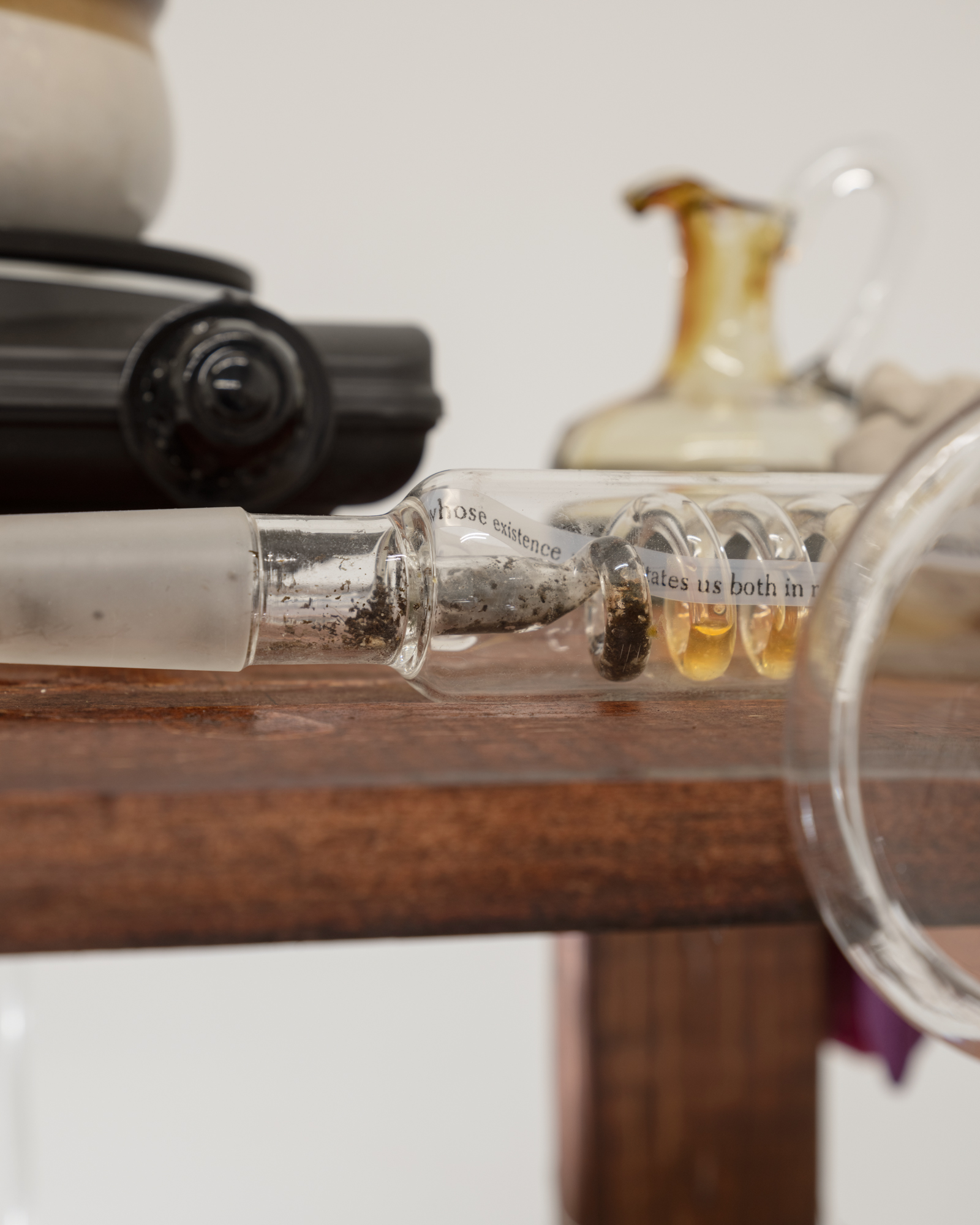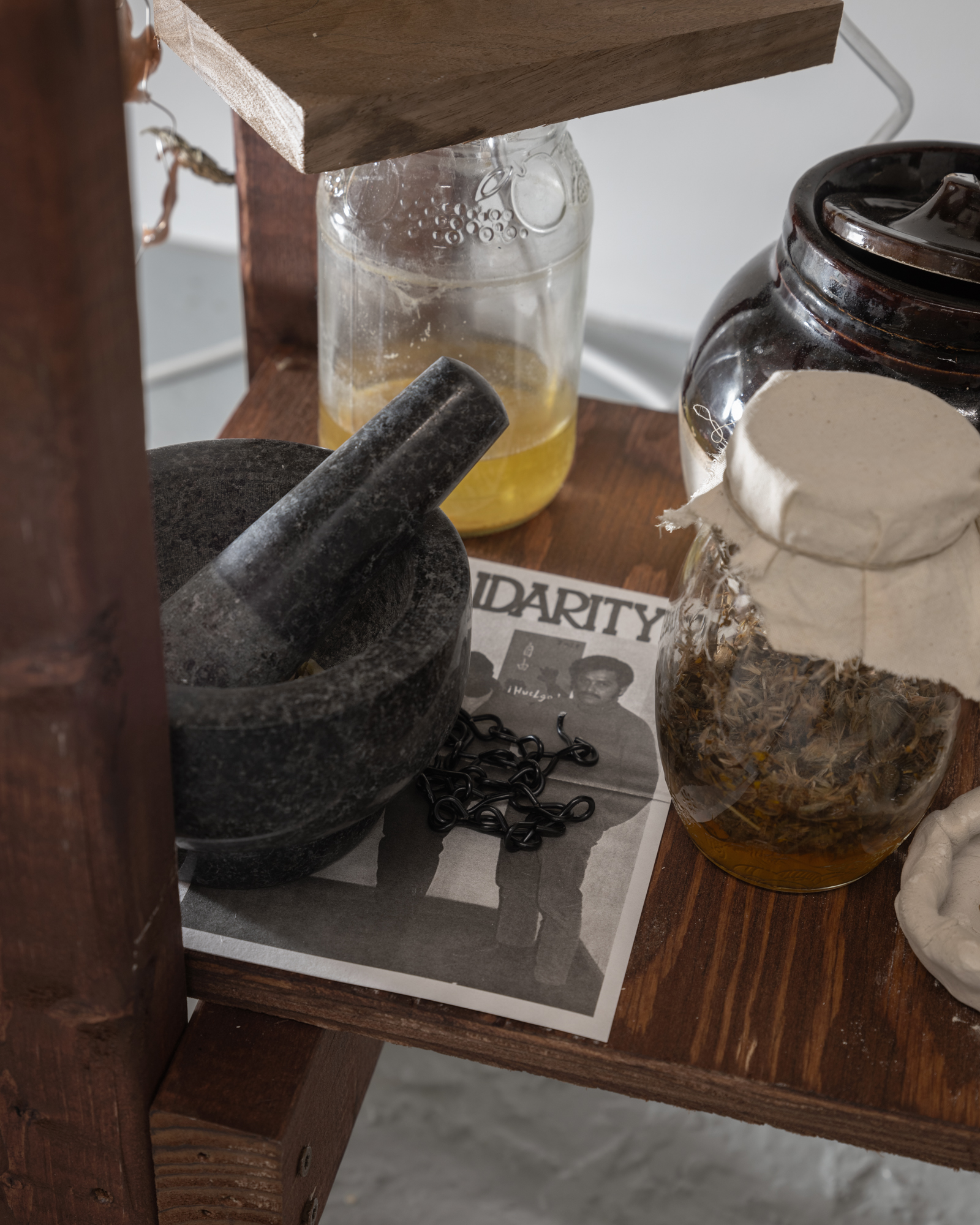2021
“passionate research…directed by the secret hope of discovering beyond the misery of today, beyond self-contempt, resignation and abjuration, some very beautiful and splendid era whose existence rehabilitates us both in regard to ourselves and in regard to others” (Frantz Fanon-On National Culture)
in regard to ourselves and others revisits the bond formed within Asian and African laborers during the era of abolition in the U.S. South and Caribbean Islands. I try to imagine the way in which black and Asian people have found themselves on the same plantation, city and factory. And how their lives are bonded not only by chains and shared hardship but also by living together, sharing food, looking out for and taking care of each other. I’m interested in the entanglement between people, plants and land. Through experimenting with and thinking alongside materials, I try to imagine a tactic to counterpose the colonial formulation of the archival with other methods of recording and forms of temporality.
The sculpture is a cooking/fermentating table that recirculates colonial goods into new relations by mimicking processes like the fermentation of rice, sugarcane and beans. Fragments of the archival materials are scattered around. Cut-outs of a Chinese poem addressing the injustice of slavery written by a former indentured laborer named Kan Shi Kon are hung on the side. Together, the sculpture creates a speculative site for collective study.
Wooden crate, davallia fern, led light, wooden table, glass jars, galvanized steel wire, electric burner, aluminum pot, clay pot, clay bowls, silicon,
magnifier, glass distilling tube, sugarcane juice, molasses, refined sugar, cordyceps fun- gus, acadia flower, spice bag made by Chih-yang Hsu,
dried licorice, cinnamon sticks, dried orange peel, printer pa- per and other mixed media.
“passionate research…directed by the secret hope of discovering beyond the misery of today, beyond self-contempt, resignation and abjuration, some very beautiful and splendid era whose existence rehabilitates us both in regard to ourselves and in regard to others” (Frantz Fanon-On National Culture)
in regard to ourselves and others revisits the bond formed within Asian and African laborers during the era of abolition in the U.S. South and Caribbean Islands. I try to imagine the way in which black and Asian people have found themselves on the same plantation, city and factory. And how their lives are bonded not only by chains and shared hardship but also by living together, sharing food, looking out for and taking care of each other. I’m interested in the entanglement between people, plants and land. Through experimenting with and thinking alongside materials, I try to imagine a tactic to counterpose the colonial formulation of the archival with other methods of recording and forms of temporality.
The sculpture is a cooking/fermentating table that recirculates colonial goods into new relations by mimicking processes like the fermentation of rice, sugarcane and beans. Fragments of the archival materials are scattered around. Cut-outs of a Chinese poem addressing the injustice of slavery written by a former indentured laborer named Kan Shi Kon are hung on the side. Together, the sculpture creates a speculative site for collective study.
Wooden crate, davallia fern, led light, wooden table, glass jars, galvanized steel wire, electric burner, aluminum pot, clay pot, clay bowls, silicon,
magnifier, glass distilling tube, sugarcane juice, molasses, refined sugar, cordyceps fun- gus, acadia flower, spice bag made by Chih-yang Hsu,
dried licorice, cinnamon sticks, dried orange peel, printer pa- per and other mixed media.




